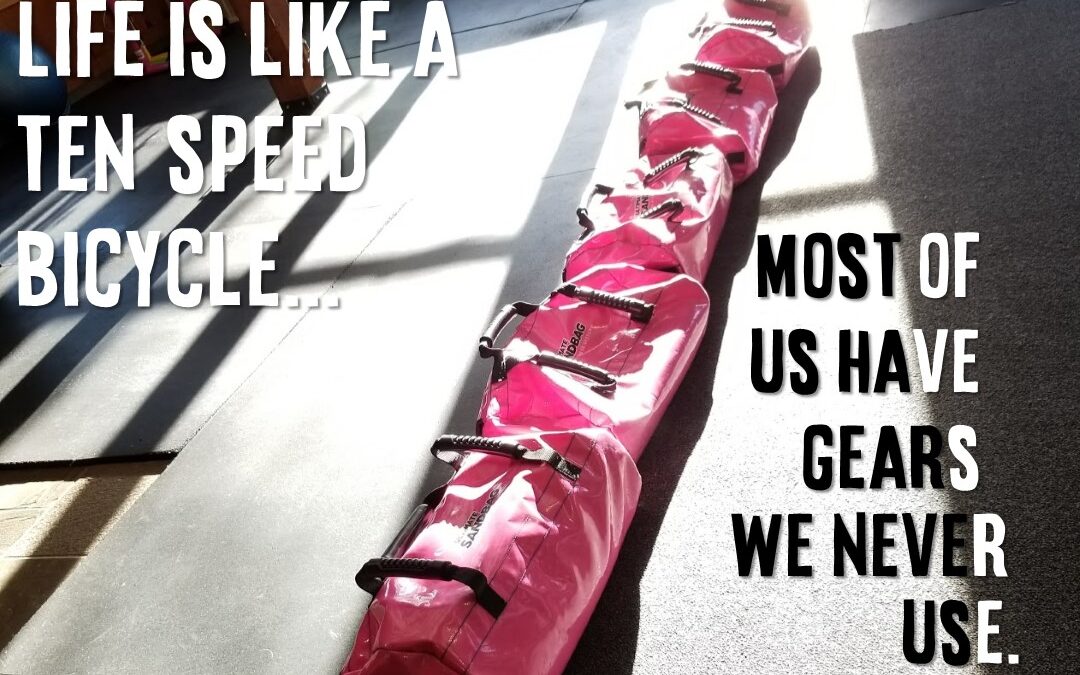The technical definition of work is the product of moving something a distance by exerting a force. My version – how much “umph” you put into something. Let’s talk about work as it pertains to your workouts. (no pun intended).
Since work is the product of a force moving a measurable distance, manipulating those two variables can change the amount of work you do. Let’s use a bear hug squat as an example.
- Let’s say you have a 20-lb sandbag and you are able to squat down so that your hips are level with your knees. You’re doing work to move that sandbag from totally straight legs to your hips level with your knees.
- It felt kinda light so you want to increase the weight to 30-lbs. You do that and still squat to get your hips level with your knees. Because you increased the sandbag weight and still went the same range of motion, you did more work with the 30-lb sandbag.
- However, if the 30-lb sandbag was too heavy and you only bent your knees a little bit, you might not have done any more work than you did with the 20-lb sandbag and full range of motion.
The amount of work you do depends on load and range of motion. Just because you increase the weight of something, does not mean you are doing more work. It’s a product of two things: load and range of motion. So far so good? Ok, let’s keep going.
Quick review: Strength is the maximum force your muscles are able to generate. Work is using that strength to move something a distance. Now we add another variable – time. Power is the amount of work performed per unit of time. Simply, how much work you can do in a short amount of time. Why is this important?
Muscular power is your muscle’s ability to generate force quickly. You may be thinking that you don’t need power – you’re fine at the speed you’re at. While that may be true right now, it’s not always going to be true. As we age, we lose muscle mass – preferentially the fast twitch fibers. This means we get weaker and slower as we get older – unless we do something about it. Your best time to start strength training is in your 20s, but it is NEVER too late to start! You can ALWAYS make a positive change in your strength and muscle mass – at every age!
I did my doctoral dissertation comparing the difference between strength and power training on physical function in older adults. I was trying to determine which type of training was more beneficial to daily tasks. Turns out, POWER training led to greater improvements in daily tasks. It’s not to say that you don’t need to strength train. You DO need to strength train. You can’t add speed to a movement without a foundation of strength. Strength training is performed with heavy loads at a “standard” speed. Power training is performed at submax loads (about 40% maximum) at a fast speed. “Fast” is relative to the individual’s current speed, which means it has to be as fast as YOU can do something.
In our 8-week program, we always start out with more strength and cardio-type workouts. Over the 8-weeks, we add in more speed and power movements. It’s a progression, like everything else in our program. You can not start to power train without a foundation of strength. You’ll get injured.
Now that you know the difference between strength, work, and power – think about those in your workouts.

